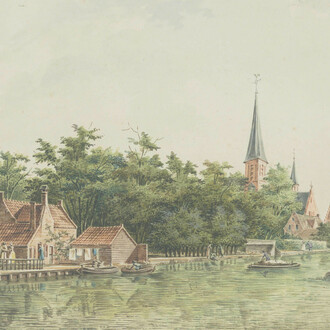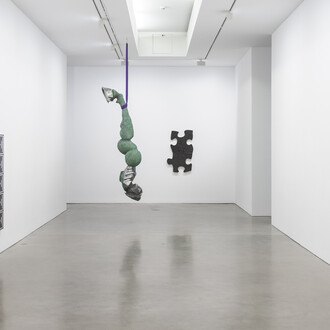An obvious feature shared by the different, quite divergent classical types of subject matter interpreted by Jörn Grothkopp in a very unique and individual new manner, is the reduction of the elements of the image to its basic structures, effecting a radical simplification of the visual forms. To this is added the blurriness of forms, as well as the fact that in many paintings Grothkopp pushes both forms and colors almost to the edge of perceptibility. The shapes appear as seen through a fog, hovering just beyond the reach of visual and verbal tangibility, as if a veil had been lowered between perceiving subject and perceived object. At the same time it remains unclear whether these shapes and forms are dissolving into the fog or rather appearing out of this fog. Are the different variations of the Mona Lisa reconstructions of possible preliminary stages to the completed painting, or are they subsequent deconstructions of that iconographic image? The question remains unanswerable, or rather it is both simultaneously, an oscillating persistence in an intermediate state between sensorial and mental perception, abstraction and figuration—at times it is almost as if Rothko's vibrating abstract forms had almost, but not quite, been pulled back into figuration.
It is telling, of course, that Grothkopp's exhibition carries the title "we are seeing." In his contribution to the catalogue of the exhibition with that same title at the Städtische Museum Engen Velten Wagner writes: "In the pattern-like marking of the subject-matter and the dissolution of forms, up to their disappearance in the white space of the image, the artist creates mental images. These images are not subtracted from the reality of the visual impression, but directly target the perception of the beholder. Their point of departure is not the what but the how, their focus not on the object but on its perception. As a result, it is perception itself that becomes the true subject-matter." It is precisely this veil of blurriness and reduction of shapes and colors that turns perception itself into Grothkopp's real subject-matter. It demonstrates that perception is a incessant interplay between purely sensorial stimulus and mental processing.
It is as if Grothkopp were depicting the being of objects in the unceasing and always both complete and incomplete act of coming into being, in its perpetual, in every moment occurring cycle of appearing and disappearing, what Heidegger termed "Anwesen" (presencing). At the same time, the ambivalence between appearance and disappearance suggests the reciprocity of the process: objects not only appear in consciousness as it receives a visual impulse, these objects are at the same time, in a movement of outward projection, created by that same consciousness, just as language both depicts and shapes reality, and thought and its verbal expression are irresolvably connected. The "we" in the title of the exhibition furthermore points to the interplay between collective and culturally determined perception/creation of the world (e.g. through language and visual conventions such as art history: cf. Mona Lisa) and our individual perspective, always necessarily different from the next person. The not predetermined und unfixed openness of the images allows both aspects a wide range of expansion. Grothkopp thereby provides a structure of relationships for the complex experience of viewing, whose seeming simplicity is transformed back into a complex visual experience in the act of beholding.
















